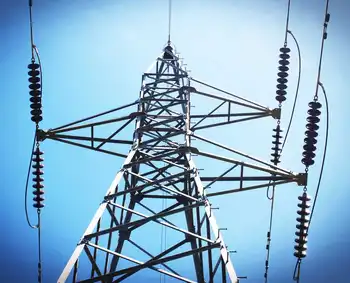Magna to debut electric car
GENEVA, SWITZERLAND - There's probably only one sure-fire way to get ahead in the auto business these days, and that seems to be to show off your advanced green technologies that may not even be ready yet, but will be by the time large numbers of consumers are willing or able to buy them.
Canadian auto parts conglomerate Magna International will also highlight its green prowess in an environmentally friendly (or friendlier) all-electric concept that is debuting at the Geneva motor show, called the Mila EV.
Surely not named after the wife of former Canadian prime minister Brian Mulroney, the concept was produced by the firm's Magna Steyr European division, based in Austria, as a flexible platform that can accommodate electric only, fuel cell, natural gas, plug-in hybrid, or either full or mild hybrid designs. The small four-door hatchback show car uses a 67 hp electric-only motor, and can be recharged in 2.5 hours, although Magna didn't specify whether this quick charge time required a special charging station.
In January, Ford announced that it would produce an all-electric vehicle in association with Magna for sale in 2011, so it's a fair bet that this car provides a good precursor to what Ford's offering will bring, at least in powertrain if not in its looks. That Ford vehicle had a target range of 100 miles (160 km), while the range stated for the Mila comes in at 93 miles (150 km), with Ford noting a full recharge time of 12 hours from a standard 110V outlet, or 6 hours on a 220V for its EV.
Magna says it will not produce the Mila EV on its own, but hopes to sell components from it to various mainstream automakers. The Aurora, Ont.-based firm plans to start producing car-focused lithium-ion batteries in 2010, but is also highlighting the fact that it will also make available the engineering resources to integrate the batteries with other new components into the overall package, as underlined with the Mila EV at Geneva.
The prominent connecting line between the headlights and side windows houses a remote-control door opener, slim rear view cameras in place of wind-fighting mirrors, as well as a novel exterior battery level gauge that adjusts to show current charge levels.
Doesn't hurt that the Geneva show is one of the few major international shows with participation from every major automaker. Nissan announced online recently that it would not be at the Frankfurt motor show this fall, nor at the LA and Detroit auto shows that follow it, at least at a corporate level, as it will focus its efforts on shows in New York, Shanghai, Tokyo and the Geneva show.
A much lower proportion of hybrid cars sell in Canada versus the United States, while Canadians so far have much preferred hybrid versions of other cars instead of unique hybrids like the Toyota Prius, pointing to a more conservative view of hybrids than their southern neighbours, said Toyota Canada's green car manager.
"The proportion of hybrid sales in the U.S. is much higher than in Canada," said John-Paul Farag, advanced technology and powertrain manager at Toyota Canada. "Since the Camry hybrid has come out in Canada, it has outsold Prius, in contrast to the U.S."
His comments come a few months before Toyota introduces a radically new Prius, as well as an upcoming unique hybrid Lexus model, the first one in its luxury arm's lineup. Toyota promises that the 2010 Prius will maintain its title as the most fuel efficient vehicle for sale in Canada, with slightly lower fuel consumption than before, even though it's slated to make 22 per cent more power as well.
The 2010 Prius is slated to achieve an overall average of 3.8 L/100 km, as compared to the 2009 Prius' 4.2 L/100 km average.
Farag said there are signs that the Canadian public is starting to warm up to hybrid technology. "There have been months in British Columbia where the Camry Hybrid has outsold the (gas-only) Camry," he said, while acknowledging that shortfalls in supply have played a role in limiting sales in the past.
"By 2020, every one of our vehicles will be hybrid, either as an option (as in the Camry), or a stand alone, like the Prius."
Plug-in hybrids like the Chevrolet Volt that offer a range of 40 miles (64 km) or more are too costly to make sense for most people, concluded a recently released study submitted to an energy policy academic journal late last month.
At current fuel, electricity and battery cost levels, a plug-in hybrid with a small electric battery would be "a robust choice for minimizing gasoline consumption, cost, and greenhouse gas emissions," if used for short trips (10 miles/16 km or less), and recharged often. Thus although not mentioned by name, vehicles such as the planned Saturn Vue plug-in hybrid that can travel seven miles (11 km) on battery power alone were found to make more financial sense than plug-in electric vehicles with much larger and more expensive batteries such as the highly hyped Chevrolet Volt, which promises up to 64 km worth of range on a full charge.
The perilous financial waters enveloping Saab have not swallowed up Swedish counterpart Volvo to the same degree, thanks in part to a more diverse vehicle lineup but largely on the strength of their respective American owners GM and Ford. But Ford has been clear that it is now looking at "every option" for Volvo. Which in real speak means it's actively shopping its safety-focused Scandinavian luxury brand.
Changes on the 2010 S80 that will arrive in the second half of this year include a facelifted nose and new steering wheel inside, and revised suspensions on base and the optional sports chassis system. A more cushy comfort chassis will be the standard underpinning setup, while the sports chassis will include a 20 mm lower body and firmer springs and anti-roll bars.
Related News

Philippines Ranks Highest in Coal-Generated Power Dependency
PHILIPPINES - In a striking development, the Philippines has surpassed China and Indonesia to become the nation most dependent on coal-generated power in recent years. This shift highlights significant implications for the country's energy strategy, environmental policies, and its commitment to sustainable development amid global efforts to reduce carbon emissions.
Rising Dependency on Coal
The Philippines' increasing reliance on coal-generated power is driven by several factors, including rapid economic growth, rising electricity demand, and the perceived affordability and reliability of coal as an energy source. Coal has historically been a key component of the Philippines' energy mix, providing a stable…





